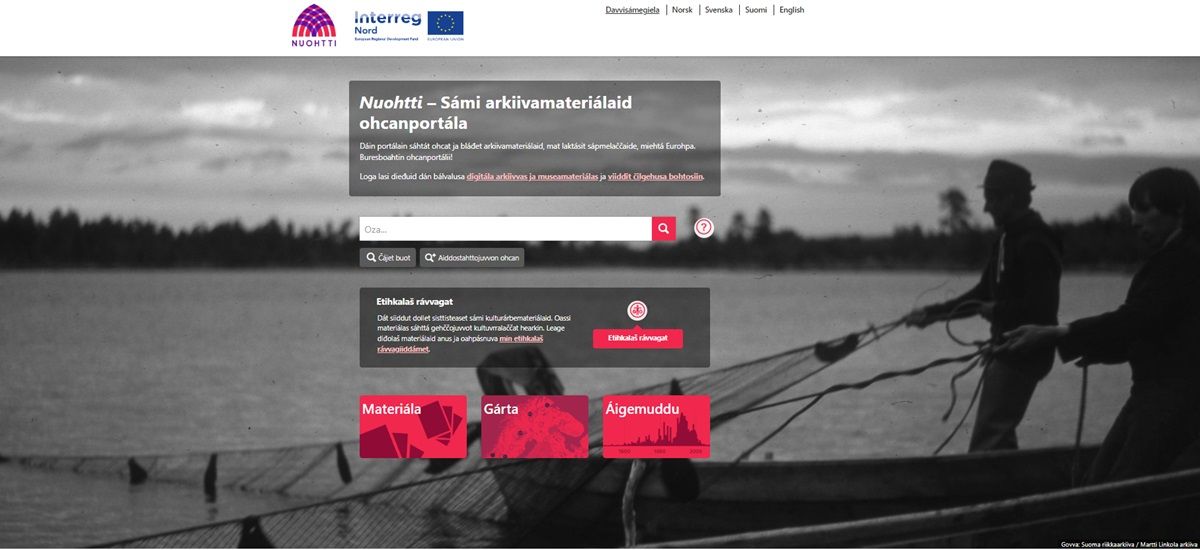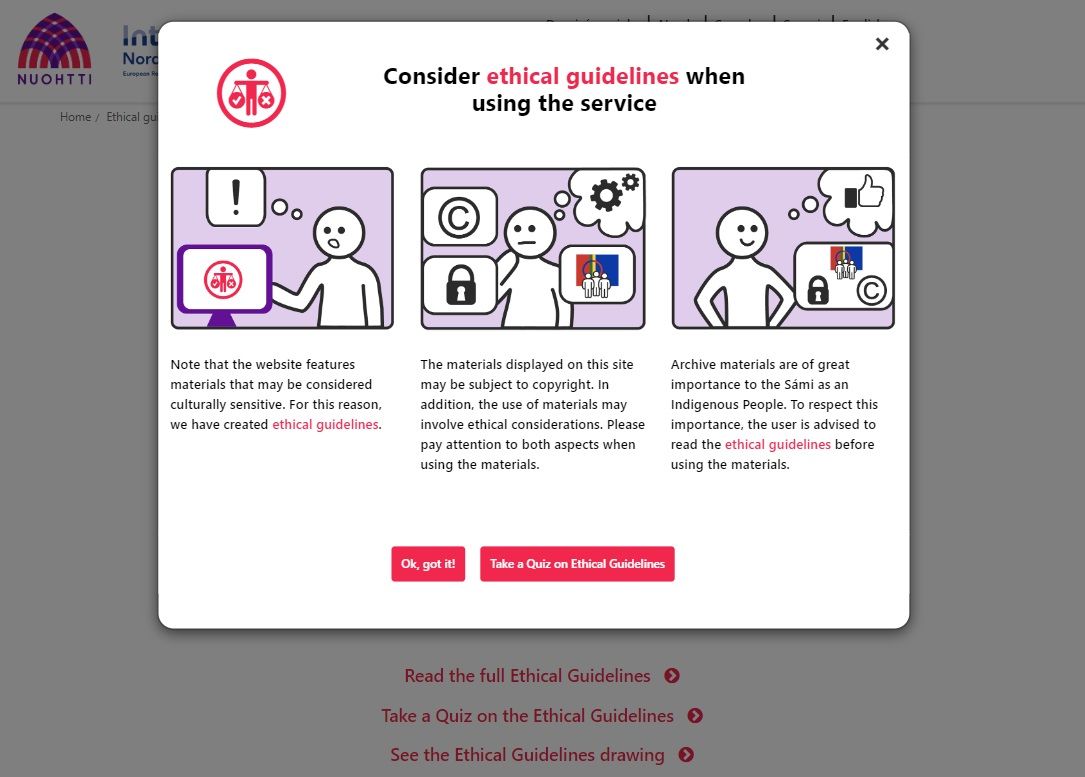Nuohtti was developed and constructed in the Digital Access to Sámi Heritage Archives project (EU InterregNord 2018-2021), in co-operation between five partners from Finland, Norway and Sweden: the Sámi Archives in Finland and Norway, the University of Lapland (leader), the University of Oulu and the University of Umeå.
The project team included experts on archiving (Sámi archives), technical design and implementation (University of Oulu), human computer interaction design (universities of Lapland and Umeå), graphic design (University of Lapland), law and cultural history (University of Lapland).
Nuohtti is maintained in collaboration between the national archives of Norway, Sweden and Finland.
DIGICHer
Another EU-funded, multi-disciplinary project which aims to improve the digitalisation of Sámi cultural heritage is DIGICHer - Digitisation of cultural heritage of minority communities for equity and renewed engagement (EU Horizon Grant Agreement No. 101132481).
In collaboration with the Sámi, the Jewish and the Ladin people, the project will develop a new framework for increasing equitable, diverse and inclusive practices in the field of digitalisation of minorities’ cultural heritage. The framework will be scalable and adaptable to other minorities as well, and it is targeted to policy and decision-makers and cultural institutions.
The framework is based on the research focusing on the legal, policy, socio-economic and technological factors driving the digitisation of minority communities’ cultural heritage at the moment, and aims at providing new understandings on the potential, opportunities, barriers and risks of digitising minorities’ cultural heritage.
DIGICHer consortium of universities and cultural institutions in five European countries working in the field of minorities’ digital cultural heritage: Vilnius Gediminas Technical University (leader), Friedrich Schiller Universitat Jena, University of Lapland, Istituto Italiano di Studi Germanici, Europeana, National Archives of Finland, Jewish Heritage Network, Istituto Culturale Ladino, Lietuvos Inovaciju Centras, Network to Promote Linguistic Diversity and Time Machine.
The project started in February 2024 and runs for three years.
Find out more
Would you like to find out more about Sámi heritage and the projects mentioned in this post? Visit the Nuohtti portal and the Digital Access to Sámi Heritage Archives website. You can also find out more about the DIGICHer project.





